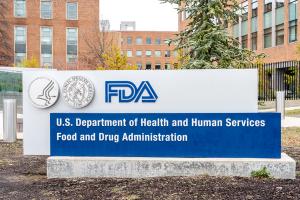The Resurgence of New Mental Illness Treatments
Kenneth Koblan, PhD, chief scientific officer at Sunovion, discusses novel therapy development and clinical trial challenges in mental health.
Treatments for mental illnesses have long stagnated, as the same treatments have been used for decades. However, we see a big resurgence in psychiatric therapies in the biopharmaceutical industry. In this interview, Kenneth Koblan, PhD, chief scientific officer at Sunovion, discusses novel therapy development and clinical trial challenges in mental health.
Moe Alsumidaie: Serious mental illnesses have always been challenging to treat in patients. But there are also a lot of challenges during the clinical trial phase when looking at new treatments, especially when gauging the severity of the symptoms. What is it about these disorders that make it difficult to measure the effectiveness of potential therapies, particularly in CNS disorders and psychiatric disorders?
Kenneth Koblan: The serious mental illnesses that we work on, like schizophrenia and bipolar disorder, manifest themselves in many different ways. Patients often present with multiple symptoms and multiple comorbidities. Individuals may present with a similar total symptom score on a registration scale used to measure the overall severity of the disease, such as the Positive and Negative Syndrome Scale (PANSS), for schizophrenia or the Montgomery-Åsberg Depression Rating Scale (MADRS), for depression. Still, the heterogeneity of the underlying symptoms makes it challenging to truly assess the specific subdomains—such as negative symptoms or cognition impairment in schizophrenia, or anhedonia or lack of pleasure in depression.
MA: Talk to me specifically about the PANSS assessment for schizophrenia. Do you think this has become outdated, or is it still relevant?
KK: I do think it’s relevant. The PANSS scale is the gold standard by which all atypical and typical antipsychotics have been registered. It is a global scale recognized in pan-Asia, Europe, and the United States. We believe that any future medicine used to treat schizophrenia will utilize this scale as a basis. The PANSS is a 30-question scale that is broken up into five subdomains. This monitors positive and negative symptoms and hostility, depression/anxiety, and cognition/disorganization. We believe that regulatory bodies will continue to use the gold standard registration scales to measure future registration studies. It’s more in new patient-reported outcomes or in ecological assessments that occur during the clinical conduct of the study that FDA is working with sponsors to include in their studies.
MA: You mentioned that PANSS is still the gold standard, but do you think there are ways to improve clinical trials in schizophrenia and other serious mental illnesses like bipolar depression to get more treatments to the market? Where do you think regulatory bodies may head when accepting innovations regarding scales or different endpoints in the protocols?
KK: It’s a great question. We believe that it’s going to require innovation, not just in terms of the kinds of targets we work on and the medicines we create and develop, but also from a partnership standpoint with regulators across the globe to go and develop new methodologies for establishing effectiveness and safety in the patient populations.
For example, in 2019, FDA issued guidance around strategies to decrease variability in attempts to involve predictive enrichment for the kinds of patients going into studies. From 2019 until now, the overall drug development lifecycle has been short. But we are starting to include advice from FDA guidance documents in discussions with regulators at the end of the Phase II meeting. We’ll collaborate with FDA, come to an agreement, and then we’ll go out and conduct a study in that adequate and well-controlled environment. We then look for the outcome measures and, hopefully, at the end of Phase III, if the study is positive, we’re fortunate enough to include these new types of enrichments or strategies to decrease variability.
MA: And to that end, you recently presented a poster at the International Society for Clinical Trial Methodology (ISCTM). You looked at ways of measuring the efficacy of compounds in serious mental illnesses. What are your thoughts on how we look at serious mental illnesses in clinical research?
KK: The poster recently presented at ISCTM was our attempt to broadly share our thoughts on an enrichment strategy that could lead to more effective testing of new treatments that would require fewer subjects and deliver value for patients and clinicians. We believe it will be a science community that shares these types of innovations and approaches, in collaboration with regulatory leaders and other sponsors. And matching the instrument to the trial population and endpoint will lead to more face validity with the outcome measure and better power for our clinical trials, ultimately best for our patients. That’s what our whole focus is about—trying to get those new medicines to patients.
MA:Speaking of patients, there hasn’t been much progress in treating schizophrenia. I think it’s been over 60 years since a new MOA came to market.
KK: That’s right.
MA: Considering the devastating nature of this disorder, why has the industry been so slow at bringing patients new advances?
KK: We have a
I think it’s a combination of different endpoints where the PANSS scale was not used, for example, and different pharmacologies. We’re looking to change that as we await the outcome of our large global Phase 3 studies with our new non-D2 mechanism. Earlier compound results were published in the
MA: I have another question about the tendency of schizophrenia to be associated with substance abuse. Psychiatrists don’t prescribe certain medications because of a stimulant effect. Where do you think the mechanisms of action are heading in schizophrenia?
KK: In the clinic, I think that you’re starting to see more focus and effort on non-D2 mechanisms and either monoamine targets or novel neurotransmitter systems that work through a completely different mechanism, such as the one we’re currently studying that is an agonist at the trace amine-associated receptor 1. New mechanisms, as well as non-dopamine mechanisms, are being focused on for future therapies.
MA: What experiences would you share that have resulted in successful patient recruitment for those trials?
KK: It’s been a challenge in the history of mental illness clinical research as far as the stigma of mental illness in general, compounded by the pandemic, which has made it even harder to go and conduct those kinds of studies. We’ve been successful by honing in and focusing on the networks and professionals that are providing treatments for patients that come in seeking medical care.
Working with great principal investigators focused on creating value for patients and on end-to-end patient care, has been the key to some of the success we’ve had in getting patients in our trials.
MA:I’ve spoken to some people who found conducting trials during the pandemic quite challenging, with much talk about decentralized clinical trials. What challenges have you experienced through the pandemic, and how did you overcome them?
KK: We have experienced a challenge concerning our hospital-based in-patient trials where those hospitals were, of course, focused on more acute care for other disorders, as far as the pandemic was concerned. It’s been about stabilizing those staff and providing the best treatment options for at-home, novel, innovative approaches for measuring symptoms. So, for example, compared to our early studies, we now have a whole different mechanism where we are studying at-home testing and decentralized testing, like you mentioned, with respect to some of our outpatient studies.
Moe Alsumidaie, MBA, MSF, is a thought leader and expert in the application of business analytics toward clinical trials, and Editorial Advisory Board member for and regular contributor to Applied Clinical Trials.
Newsletter
Stay current in clinical research with Applied Clinical Trials, providing expert insights, regulatory updates, and practical strategies for successful clinical trial design and execution.
Related Articles
 Everything to Know About FDA’s Push Towards Radical Transparency in 2025
Everything to Know About FDA’s Push Towards Radical Transparency in 2025September 17th 2025
 IQVIA and Veeva Join Forces to Improve Efficiency and Patient Outcomes
IQVIA and Veeva Join Forces to Improve Efficiency and Patient OutcomesSeptember 17th 2025
 Managing Background Therapies in the NIMBLE Phase III Trial
Managing Background Therapies in the NIMBLE Phase III TrialSeptember 17th 2025
 Generative AI Transforms Clinical Study Report Development
Generative AI Transforms Clinical Study Report DevelopmentSeptember 16th 2025




.png)



.png)



.png)
.png)
